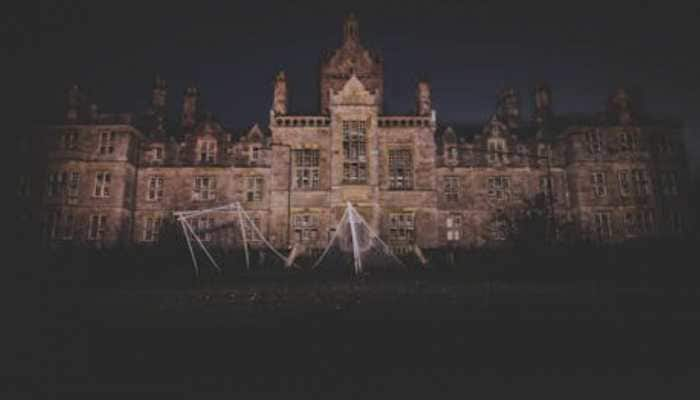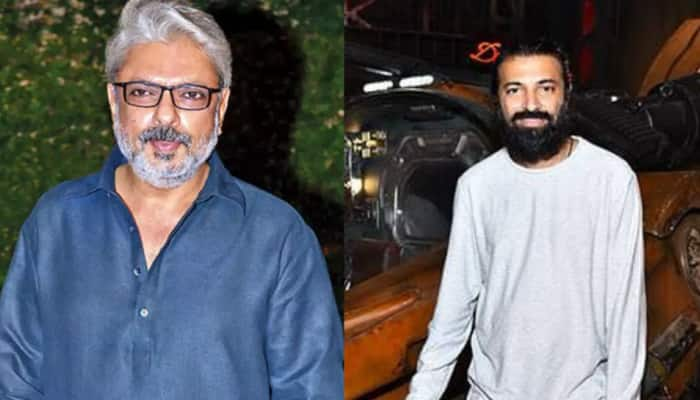Historic 'Sengol' Received By Ex-PM Nehru From Britishers To Be Installed In New Parliament
Addressing a presser, Amit Shah said that "Sengol represents the same feeling that Jawaharlal Nehru felt on August 14, 1947."
Trending Photos
)
New Delhi: A historic sceptre, 'Sengol,' which marked the transfer of power from the Britishers in 1947, will be placed in the new Parliament building as a major cultural symbol of India's independence, Union Home Minister Amit Shah said on Wednesday. 'Sengol' was received by first Prime Minister Jawaharlal Nehru on August 14, 1947, to represent the transfer of power from the British and was kept in a museum in Allahabad. Prime Minister Narendra Modi will inaugurate the new parliament building on May 28. Shah stated that the installation's purpose was clear both then and now. He said that power transfer is more than just a handshake or the signing of a document and that it must be linked to local traditions while keeping modern needs in mind. "Sengol represents the same feeling that Jawaharlal Nehru felt on August 14, 1947," he added.
"On the occasion of Azadi ka Amrit Mahotsav, PM Modi will dedicate the new Parliament to the nation," Amit Shah said at a press conference here. "It demonstrates his foresight in some ways. This is a lovely attempt to reconcile our cultural heritage, tradition, and civilisation with modernity. This building was built in record time by approximately 60,000 people. The Prime Minister will also recognise them."
The Home Minister said a historical event is being resurrected on this occasion. The historic sceptre known as 'Sengol' will be housed in the new Parliament building.
Addressing a press conference here, Amit Shah said, "On the occasion of Azadi ka Amrit Mahotsav, PM Modi will dedicate the new Parliament to the nation. In a way, it shows his far-sightedness. This is a beautiful attempt to merge our cultural legacy, tradition and civilisation with modernity. Around 60,000 people worked on the construction of this building in record time. The PM will also honour them." The Home Minister said that a historical event is being revived on this occasion. The historic sceptre, 'Sengol', will be placed in the new Parliament building.
"A historical event is being revived on this occasion. The historic sceptre, 'Sengol', will be placed in the new Parliament building. It was used on August 14, 1947, by PM Nehru when the transfer of power took place from the British. Out of all the promises made by PM Modi for 'Azadi ka Amrit Mahotsav', one promise was respect and regeneration of our historic traditions," he said.
Also Read: 'Unfortunate': Union Minister Pralhad Joshi On Opposition Skipping Parliament Opening
The Home Minister added, "The historic incident is from August 14, 1947. It is called Sengol in Tamil, the meaning of this word is full of wealth There is a tradition behind this associated with ages. Sengol had played an important role in our history. When PM Modi got information about this, a thorough investigation was done. Then it was decided that it should be put before the country. For this, the day of the inauguration of the new Parliament House was chosen."
Recalling the historic event, the Home Minister said that 'Sengol' was chosen as the symbol of the transfer of power after intensive research.
"When the time for transfer of power came, Lord Mountbatten who was the Viceroy asked former PM Nehru about what should be the symbol of transfer of power to the country as per the Indian traditions. Nehru discussed the issue with freedom fighter and avid historic scholar C Rajagopalachari. He (Rajagopalachari) after doing an intensive historic research said that as per the Indian traditions, 'Sengol' has been marked as the symbol of historic transfer," Shah said.
Stay informed on all the latest news, real-time breaking news updates, and follow all the important headlines in india news and world News on Zee News.
Live Tv







)
)
)
)
)
)
)
)
)
)
